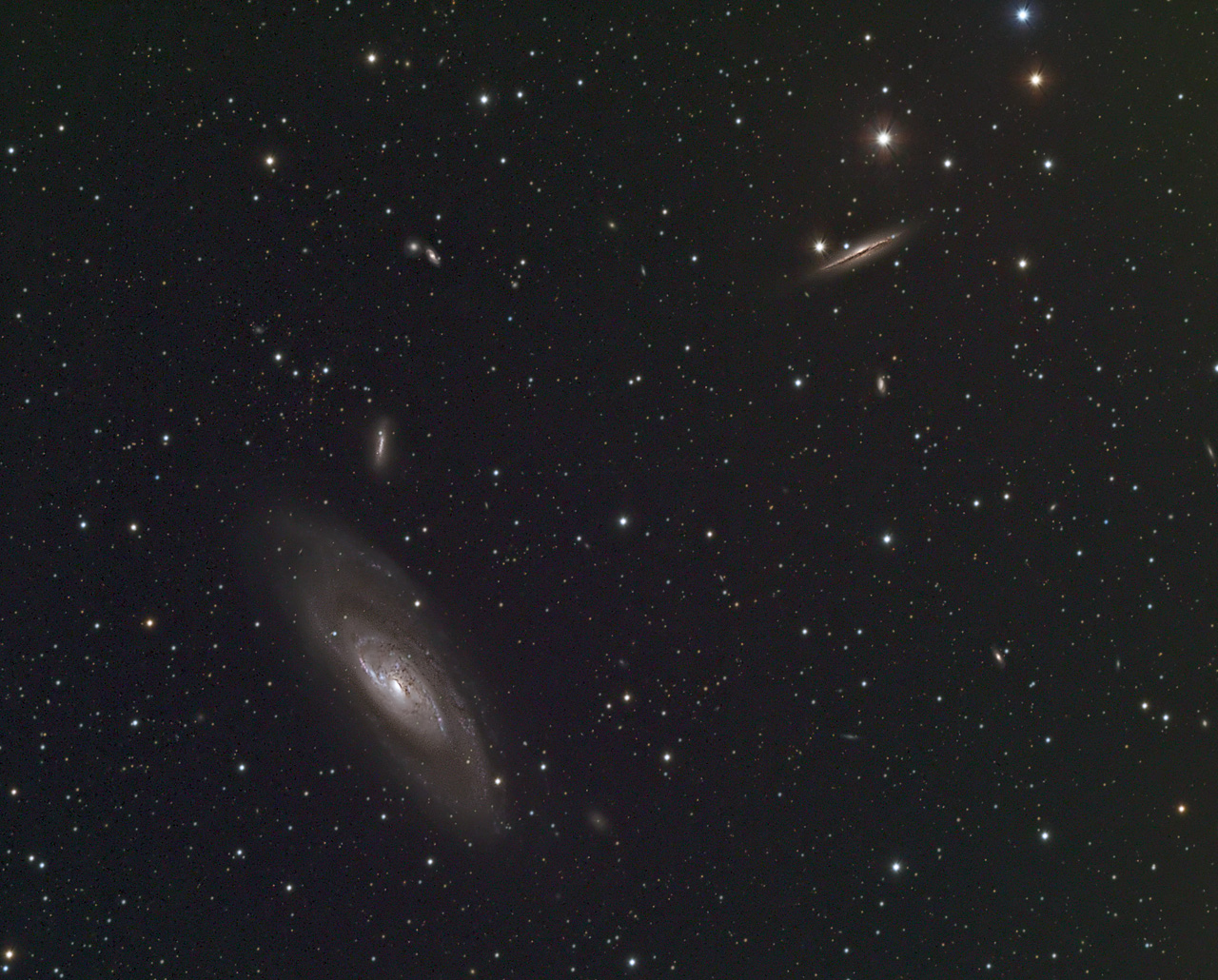You might notice that both this and my previous post have images of galaxies rather than my usual nebulae (and more specifically, emission nebulae captured with narrowband filters). That’s partly because I wanted to take advantage of the dark sky at the star party to photograph things I can’t shoot from home. But it’s also true that at this time of year, the Milky Way doesn’t come up until 3AM or so, and all of the nebulae we photograph are in the Milky Way, so it’s now “galaxy season”.
The largest galaxy in this image is M106, also known as NGC4258. It’s about 24 million light-years away in the constellation Canes Venatici. It is a spiral galaxy, but its disk is a bit warped. It is physically similar to the Andromeda Galaxy, but a bit smaller, and much farther away. The coolest thing about M106 is that it has a natural water vapor megamaser. A “maser” is like a laser, except that its output is in the microwave range rather than visible light. This allows astronomers to directly measure the distance to the galaxy, although not with great precision. Still, this is a helpful confirmation of the more common method of measuring distance, using Cepheid variables. These are stars that can be identified even at great distance, and have a constant, known absolute brightness. By comparing the measured brightness with the absolute brightness, the distance can be estimated.
The much smaller galaxy just above M106 is NGC4248, and the mid-sized galaxy in the upper right is NGC4217. There are also many much smaller galaxies visible here. How many can you spot?
